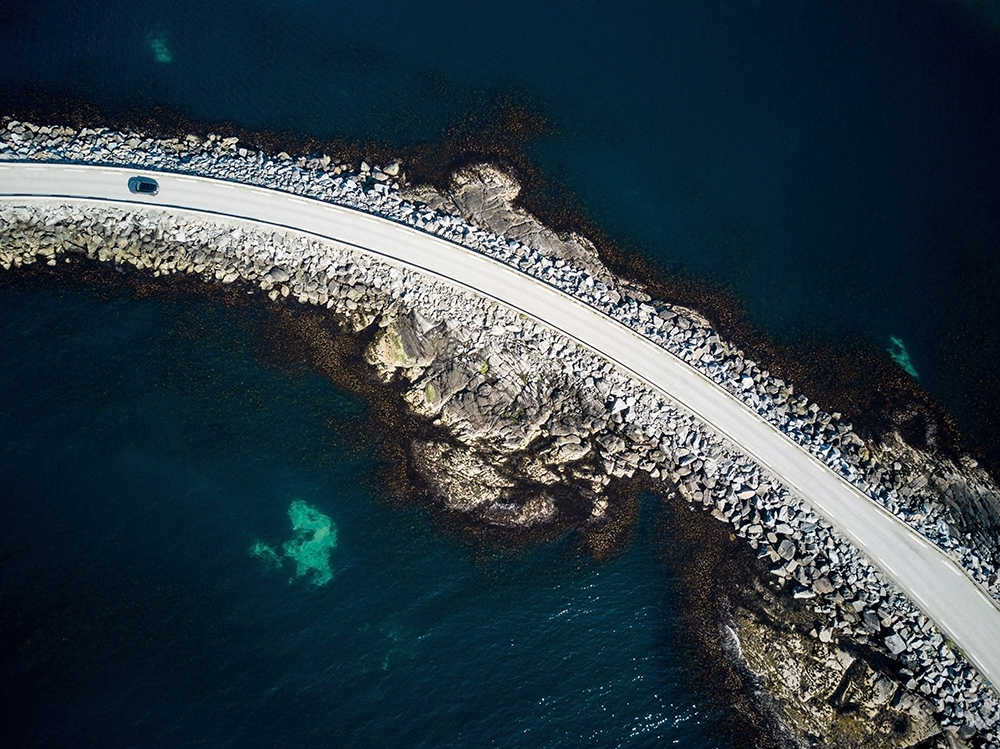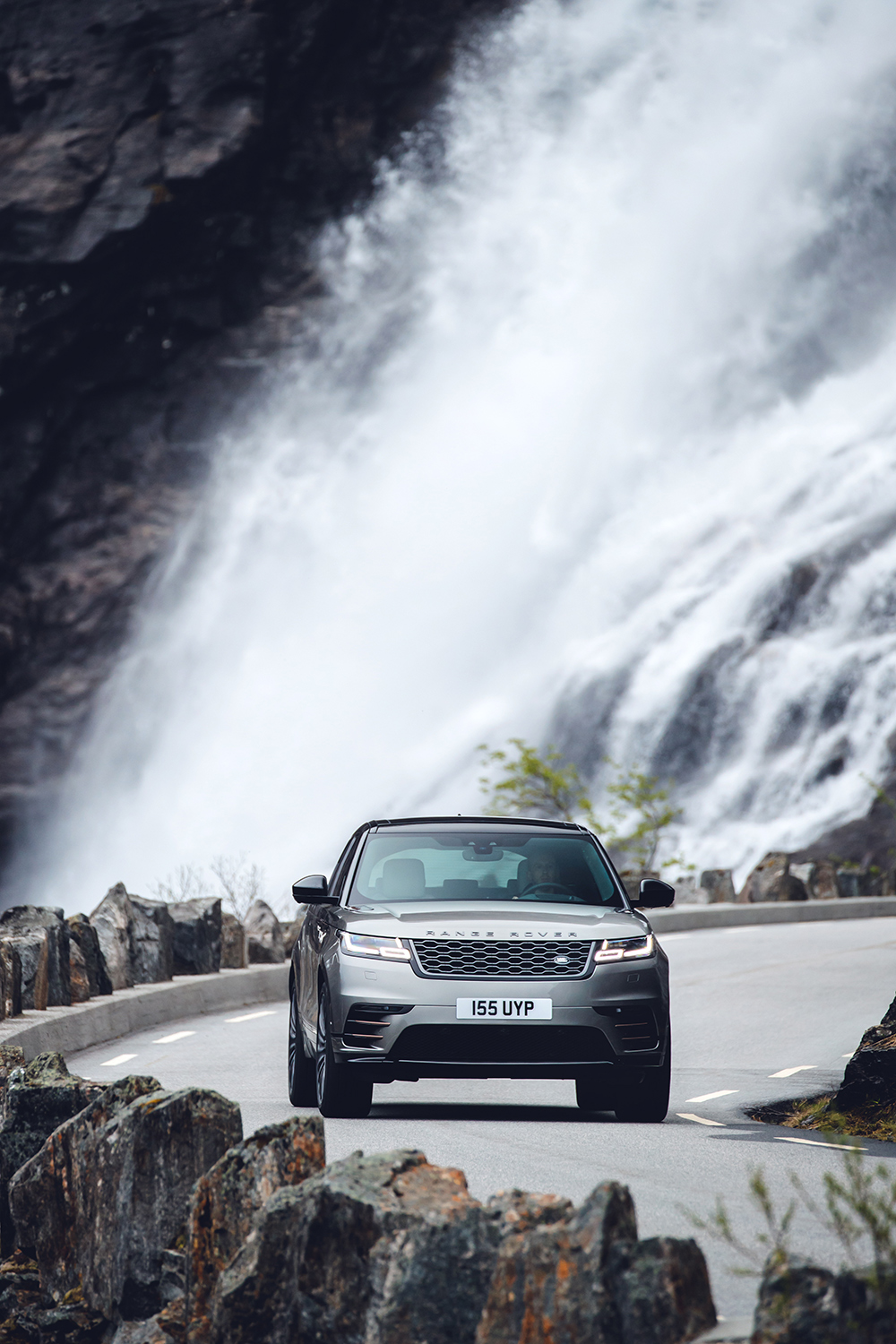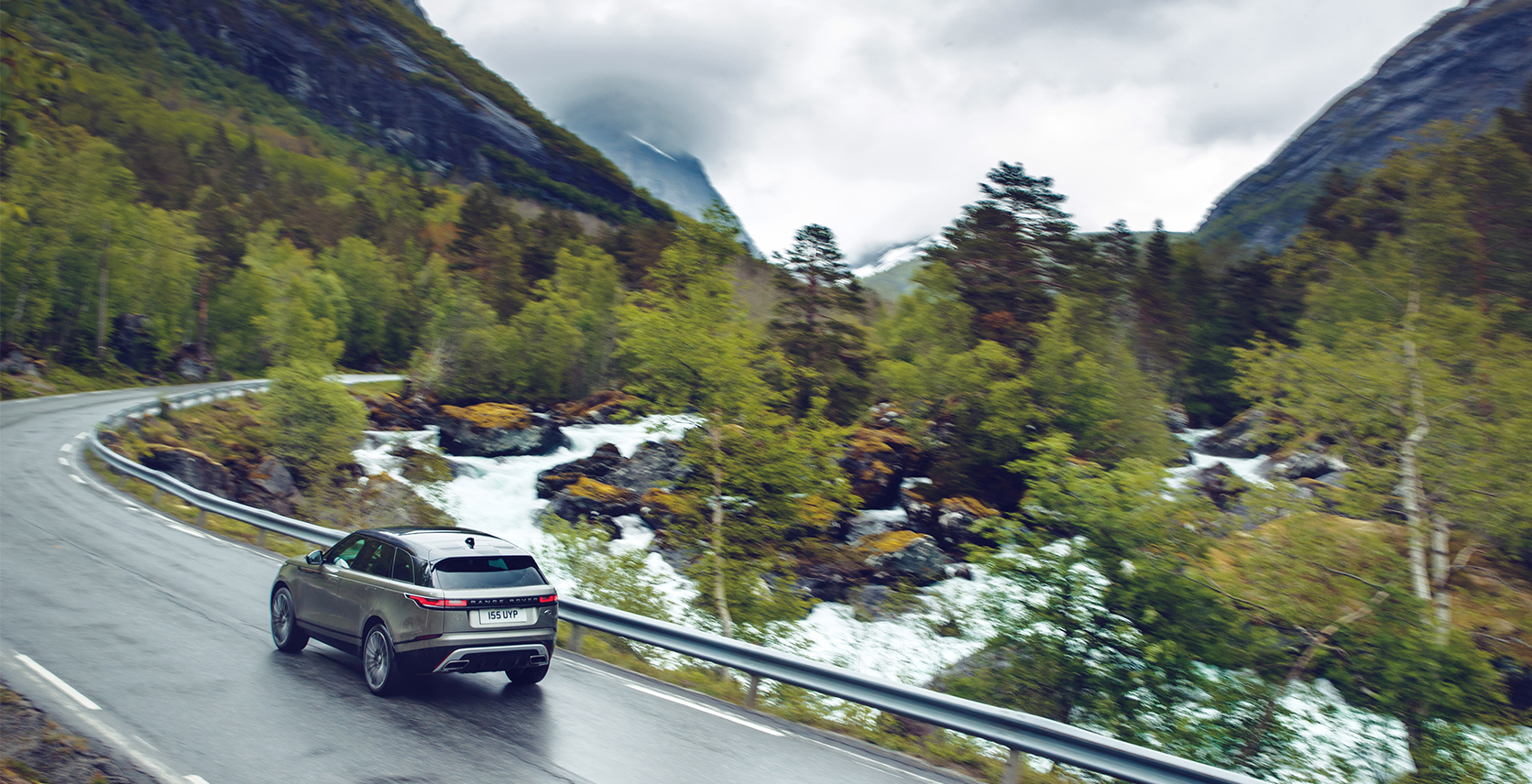We Drove Range Rover’s New Velar Through Norway’s Deadly Troll’s Ladder (and Even the Trolls Were Impressed)
Norway’s western coastline is sprinkled with 50,000 tiny islands. It’s sparsely inhabited, rugged land. Ancient glaciers receded tens of thousands of years ago, at the end of the last ice age, cutting deep notches through the Scandinavian Mountains and creating all those pretty fjords for the tour boats to cruise. Geological change is ongoing; the land is still rebounding from the weight of the ice, and the whole country is rising by a few millimetres every year.
Our tour boat captain, a 30-year-old with a shaved head and cool-guy sunglasses, explained that he wasn’t worried about climate change, about the ocean level rising to envelop all those little islands. “Norway will figure it out,” he said, his hand steady on the throttle of the Fjord Explorer. “We’ll find a way; we always have.”
The land and sea is shifting underneath them, but Norwegians have found beautiful, improbable ways to thrive — and they’ve done it in style. The country built 18,000 bridges and 900 tunnels through mountains and under the sea to connect its thousands of coastal islands. There are bridges in the middle of nowhere that are architectural masterpieces to rival the Golden Gate. The houses in Norway are cozy modernist marvels, a warm respite from cold in winter, and a glass box open to nature in summer. The region’s famous wool sweaters are functional and made to last a lifetime.
Such aesthetic ingenuity is also present in Range Rover’s Velar. Behind the wheel of this mid-size SUV, you don’t just get around — you do so in rare style, and against all odds. It, too, is a cozy modernist marvel: a highly functional mix of glass and aluminum, built to withstand whatever the earth throws its way.

Need to wade through a couple feet of water? The Velar can do that. You probably won’t ever need to drive straight up the 1,220-metre-high Strandafjellet ski hill in Norway’s Sunnmøre Alps, but it’s nice to know the Velar can do that, too.
Of course, that’s not unique to this Range Rover: all of them can perform these feats of strength. But it’s worth mentioning here because such capability is so far beyond the spectrum of “normal” for an automobile. It is, frankly, a little scary the first time you drive through a river in a Range Rover. It’s engineered overkill, like those impressive bridges and tunnels Norway built out in the wilderness. What makes the Velar special is that it does overkill so gracefully.
It has 22-inch wheels, bronze trim on the quarter panels, and door handles that retract to sit flush with the body. Sitting in the Velar for the first time, you’ll have the same sense of wonder you had when you first held an iPhone — there are so many little details to discover. The central console is a seamless black piece of glass. Turn the car on, and the controls and buttons magically appear.
“Troll’s Ladder climbs 850 metres over 11 hairpin bends. The road opens each year after the annual rockfall, which locals believe is caused by the trolls who live at the top. We didn’t see any.”
Our road trip took us from Ålesund, a fishing town on the coast, north to Molde, and then southeast towards one of the greatest roads on the planet: the Trollstigen pass (Troll’s Ladder), which climbs 850 metres over the course of 11 hairpin bends. The road is closed during winter, opening each year after the annual rockfall, which locals believe is caused by the trolls who live at the top. We didn’t see any. We were more focused on trying to keep the Velar on this narrow strip of road between sheer rock and a vertiginous drop.
Range Rover has been clever in its use of technology. It’s all there for a reason, made to streamline the driver-car interface for ease of use, decluttering the interior. It is tech in service of design, and the design department has taken full advantage.

The cabin feels less like a car and more like a living room ripped from the pages of Architectural Digest. It’s not unlike the many little Norweigan cottages and hotels we stayed at along the way: white and clean, simple and inviting, with big windows to take in the surroundings. Kvadrat, a Danish textile company that supplies furniture-makers like Knoll and Vitra, worked with Range Rover to create a grey wool fabric for the seats. Suddenly leather seats feel kind of old-fashioned.
After several hundred kilometres, many of them off-road, we arrived at our destination. The Storfjord hotel is among the best in Norway. It looks out over the fjords and snow-capped mountains, scenery which we’re taking totally for granted by this point. The hotel’s traditional Norwegian log cottages are topped with grass roofs, and filled with furniture that invites you to put your feet up by the fire. Norwegians seem to have life figured out.
It’s a lot to take in during an all-too-brief drive around the fjords, over the mountains, and across the many, many bridges of Norway. Through it all, the Velar had us admiring our surroundings — both natural and automotive. It tackled everything this country of rising seas and shifting land threw at it — and it did so with considerable style. At every obstacle, the Velar found a way.










